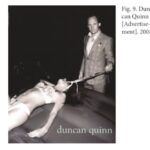
In “The Philosophy of Composition,” Edgar Allan Poe writes the infamous line: “the death, then, of a beautiful woman is, unquestionably, the most poetical topic in the world” (548). This problematic contention, which equates female death with poetic inspiration, is one of the hallmarks of the arts during the Victorian Age.
Poe, along with many famous male artists of the time, engaged with this idea and ultimately exploited young women throughout their work by implying that there is something inherently beautiful about their demise.
While many male writers and artists used the death of young women as their inspiration, some female artists of the Victorian Age, most notably Christina Rossetti and Elizabeth Siddall,1 used their art to highlight this exploitation and reclaim their subjectivity as creators, instead of passive muses.
Poe’s contention continued throughout the twentieth century with the death of Evelyn McHale, whose demise was hailed “the most beautiful suicide,” and has persisted into the twenty-first century (Cosgrove). From the suicide of Ruslana Korshunova to the hundreds of advertisements and modeling campaigns that glamorize female death, it is clear that the Victorian fascination and romanticization of the dead female body is intact in contemporary culture.
Ultimately, this romanticization has persisted in part due to the fact that representations of dead female bodies exemplify the feminine ideal: passive, visionless, and voiceless. Edgar Allan Poe’s contention that the death of a beautiful woman is the most poetical topic in art underlies a significant percentage of the literary works that he created throughout his short life. Poe’s obsession with portraying dead and dying women










Leave a Reply